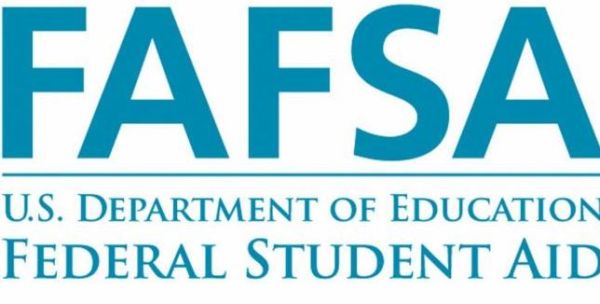
Financial Aid is money that can help you pay for college. Some aid needs to be paid back or earned, and some aid is a gift. This money is available to all kinds of people. Here are seven important things you should know about financial aid.If you don’t fill out financial aid forms, you won’t get any aid.The FAFSA qualifies you for federal aid, but many state governments and colleges also use this application to award their own aid.
Financial Aid is available from federal, state, educational institutions, and private agencies (foundations), and can be awarded in the forms of grants, education loans, work-study, and scholarships. In order to apply for any federal financial aid, students must first complete the Free Application for Federal Student Aid (FAFSA).There are four main sources of financial aid:
- The Federal Government: The federal government (the largest source) offers a number of financial aid programs. Besides aid from the U.S. Department of Education (discussed below), you also might get:
- Aid for serving in the military or for being the spouse or child of a veteran
- Tax benefits for education
- An education award for community service with AmeriCorps
- Educational and training vouchers for current and former foster care youth and/or
- Scholarships and loan repayment through the Department of Health and Human Services’ Indian Health Service, National Institutes of Health, and National Health Service Corps.
- State Government: Even if you’re not eligible for federal aid, you might be eligible for financial aid from your state. Contact your state grant agency for more information. https://www2.ed.gov/about/contacts/state/index.html
- Colleges and universities: Financial aid is available from a variety of sources for college, career school, graduate school, and professional school.Many colleges offer financial aid from their own funds. Find out what might be available to you:
- Visit your school’s financial aid page on its website, or ask someone in the financial aid office.
- Ask at the department that offers your course of study, they might have a scholarship for students in your major.
- Fill out any applications the school requires for its own aid, and meet the deadlines.
- A Nonprofit or Private Organization: Many organizations offer scholarships or grants to help students pay for college. This free money can make a real difference in how affordable your education is.
Where You Start Financial Aid:
The FAFSA is the place to start — and it’s free: To qualify for many types of aid, you’ll need to complete the Free Application for Federal Student Aid (FAFSA). By completing and submitting an FAFSA, you will automatically be considered for federal student aid. In addition, your state and college may use your FAFSA information to determine your eligibility for nonfederal aid.This application gives you access to these types of aid (Federal student aid includes):
- Grants: Money you don’t have to pay back. In the United States, grants come from a wide range of government departments, colleges, universities or public and private trusts. Some examples of grants commonly applied for in the U.S.:
- Federal Pell Grant
- Federal Supplemental Educational Opportunity Grant (FSEOG)
- The Teacher Education Assistance for College and Higher Education (TEACH) Grant
- Institutional Grants
- Private and Employer Grants
- State Grants
- Work-study jobs
- Loans: An education loan is borrowed by the student (or parent) in order to pay for educational expenses. Unlike scholarships and grants, this money must be repaid with interest. Educational loan options include federal student loans, federal parent loans, private loans, and consolidation loans.
- Federal student loan programs
- Direct Subsidized Loans
- Direct Unsubsidized Loans
- Parent Loans
- Private Loans
- Consolidation Loans
- Scholarships:
- Scholarships, similar to grants, do not need to be repaid. Scholarships come from the state, educational institutions, and private agencies. Scholarships can be awarded based on merit, financial need, student characteristics (such as gender, race, religion, family and medical history, and the like), creativity, career field, college, athletic ability, among other categories.
- There are search engines available to find scholarships such as Usascholarships.com, Peterson’s, Unigo, Fastweb, Cappex, Chegg, The College Board, Niche, Scholarships.com, Collegenet.com, and Scholarship Monkey.
Financial Aid Application Process:
- Application Process for Need-based Aid: To qualify for need-based loans a student must depict a significant amount of financial need, which is determined by the federal government based on applications like the FAFSA and the loan applications themselves.
- In order to qualify for need-based financial aid, students are typically required to submit financial aid applications, including the FAFSA and CSS Profile.
How to Complete the FAFSA:
To apply for most financial aid — including federal and state student grants, work-study, and loans — you’ll need to complete the Free Application for Federal Student Aid (FAFSA).
- Where to Find the FAFSA: The FAFSA is available online at FAFSA on the Web http://www.fafsa.ed.gov/. If you need a paper copy, you can download a PDF at studentaid.ed.gov/PDFfafsa or call 800-4-FED-AID (433-3243). You can even import your family’s tax information directly from the IRS website.
Once you have completed the FAFSA, you should apply for these types of aid: - Financial aid at the colleges you are applying to
- Private scholarships you are eligible for
- Before You Apply: Complete your income tax return. When completing your FAFSA, you and your family will be able to use your most recent completed tax returns

What will I need to fill out the FAFSA?
To complete the Free Application for Federal Student Aid (FAFSA), you will need:
- Your Social Security Number
- Your Alien Registration Number (if you are not a U.S. citizen)
- Your most recent federal income tax returns, W-2s, and other records of money earned. (Note: You may be able to transfer your federal tax return information into your FAFSA using the IRS Data Retrieval Tool.)
- Bank statements and records of investments (if applicable)
- Records of untaxed income (if applicable)
- An FSA ID to sign electronically
Note: If you are a dependent student, then you will also need most of the above information for your parent(s).
How much financial aid are you eligible to receive?
The financial aid office at your college will determine how much financial aid you are eligible to receive. Your eligibility for most federal student aid depends on a variety of factors, including your Expected Family Contribution (EFC), your year in college, your enrollment status, and the cost of attendance at the college you will be attending. (For more information, contact the financial aid office at your college or see Funding Your Education: The Guide to Federal Student Aid at http://studentaid.ed.gov/resources)
Help with the FAFSA:
If you have questions about the application or didn’t find an answer to your question, Contact the FAFSA on the Web or federal financial aid for students in general, call:
Federal Student Aid Information Center (FSAIC)
800-4-FED-AID (433-3243) / TTY 800-730-8913
Monday through Friday, 8 a.m. to midnight Eastern Time
Saturday, 9 a.m. to 6 p.m. Eastern Time


